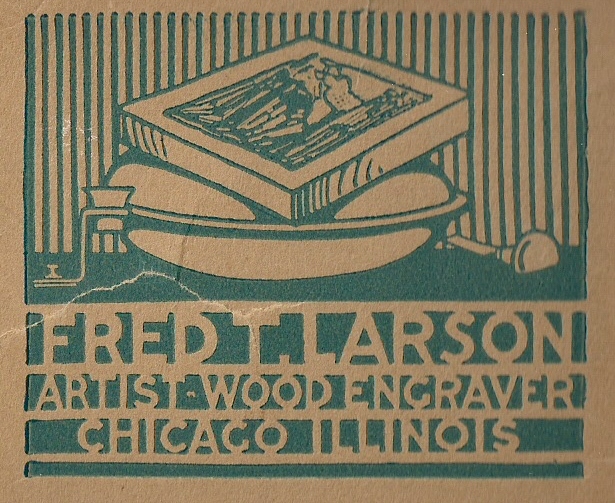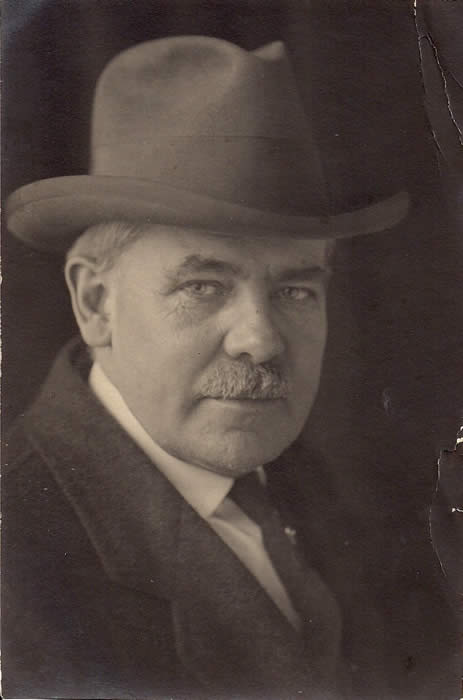
www.jimhanson.org
| home | photos | drawings | about the poems | reasons... | more poems | collaborations | translations | family pictures | movie intros |
| Fred T. Larson (April 19, 1868 - November 2, 1944) |
Fred Thomas Larson was born on Taylor Street in Chicago. Fred Larson began his artistic career when he was a young man as an apprentice lithographer. He was a painter in watercolor and oils, and learned to make woodcuts. Fred was one of the founding members of the Palette and Chisel Academy of Fine Arts in 1895. These founders advocated painting out of doors away from studios. They met in Lorado Taft's studio in the old Athenaeum Building on Van Buren Street in Chicago. Carl Mauch was the first president, and he along with Rudolphe Ingerle, Charles Mulligan and Fred Larson were the organizers. Fred was treasurer of the organization for twenty-three years. Fred helped to arrange the academy's "operas." Carmen, for example, was advertised by the cast as, "The greatest of all grandstand operas in three acts and six spasms, a Carmen with improvised rag time band music". He married Hanna Hanson on March 24, 1894. They had two daughters, Martha, born May 28, 1896, and Florence, born March 21, 1899, and they also raised Hanna's sister's son, Harry Hanson. They lived for many years at 2935 North Whipple Street in Chicago, near Logan Square. After Hanna's death in 1925, Fred went on for a visit to New Orleans, where he did many of his most memorable images (Enchanted Entrance and St. Louis Cathedral, among others). He wrote about this tour in his 1929 book Sketching in New Orleans and along the Mississippi. Fred had a stroke in 1937 that incapacitated him for several years before his death. Hanna and Fred are buried in Mount Olive Cemetery in Chicago. In his forward to the 1938 book, Wood Engravings, by Fred Larson, Jewell F. Stevens wrote, "Fred Larson is no exception to the rule that a man's inner self is manifest in the fruit of his labor. If there is nobility at the core, the centrifugal force of life will throw it to the periphery. Those who know this man intimately are not surprised to see his art expand in power and dignity...One such friend declares, 'Fred has never done such work as he is doing now' and added, 'He expressed the hope to one of his family that he might live ten years more for then he was sure he would be able to do things really worth while. This is the same desire as that expressed by another great artist, Hokusai...who, although he lived to the advanced age of eighty-nine, remarked before he died in 1849, 'If I had lived five years more I might have become a great artist.'"
|

